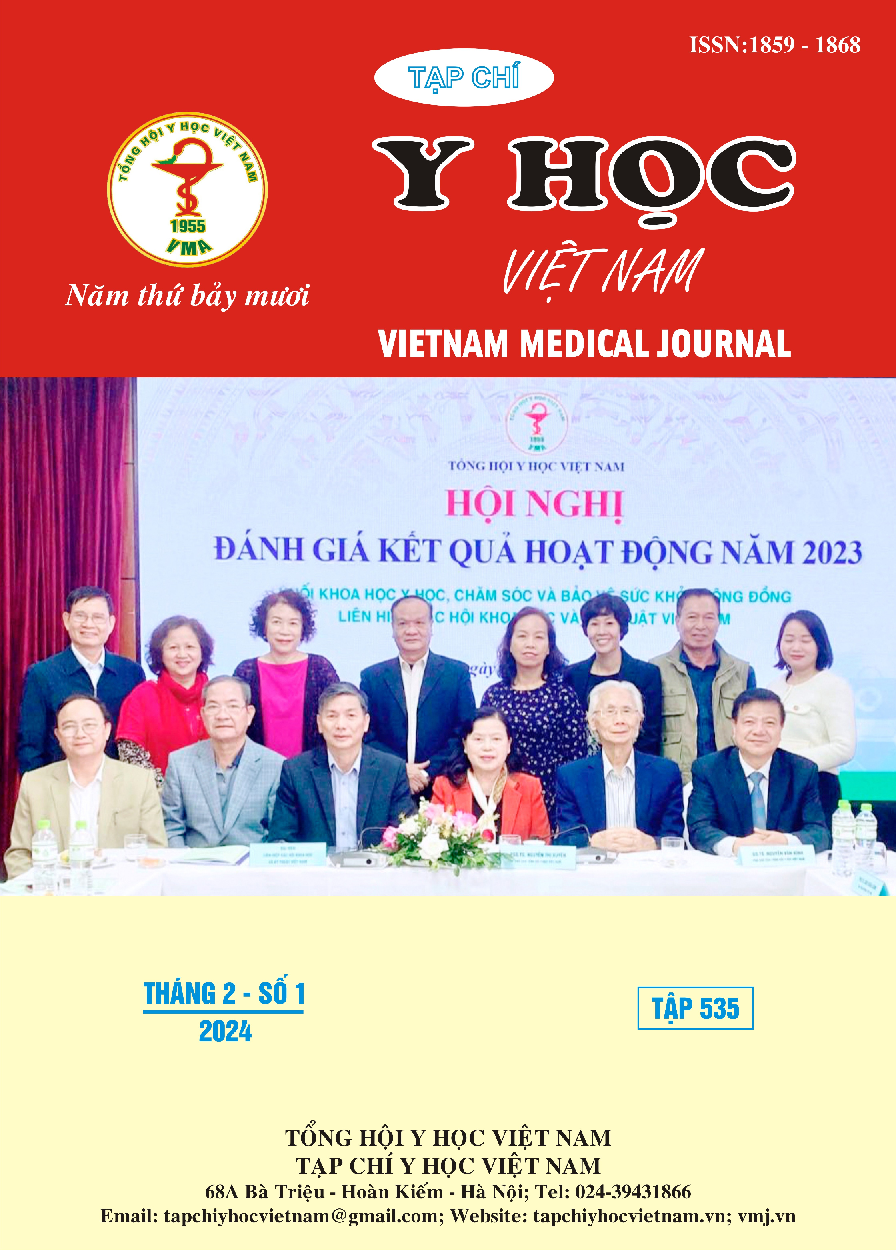SURVEY THE VALUE OF THE ABIC (AGE BILIRUBIN INR CREATININE) SCORE IN PREDICTING ALCOHOLIC CHRONIC LIVER DISEASE
Main Article Content
Abstract
Introduction: Alcoholic liver disease includes many clinical disorders: alcoholic fatty liver, alcoholic hepatitis (AH) of various degrees, alcoholic cirrhosis (AC) with its complications and acute alcoholic hepatitis manifest as acute exacerbations of chronic liver failure, caused by prolonged alcohol use. There are many indicators to evaluate the prognosis of patients with alcoholic liver disease, including the ABIC score is used more and more widely. Objects: Survey the value of the ABIC score in predicting alcoholic chronic liver disease. Study subjects and methods: Retrospective and prospective study. 62 patients diagnosed with alcoholic chronic liver disease according to the 2018 American College of Gastroenterology (ACG) diagnostic guidelines were treated at the Department of General Internal Medicine, Hanoi Medical University Hospital from January 2022 to January 2023. Results and conclusions: There were 62 patients who met the criteria. The average age of the subjects was 53.9 ± 9.4 years. The average ABIC score is 7.28 ± 1.17, the highest is 10.06, the lowest is 4.42. There is a relationship between ABIC score and 30-day mortality prognosis of alcoholic chronic liver disease with cut-off value 8.26, AUROC 0.884, p = 0.002 < 0.05, Sensitivity Se is 83.3% and Specificity Sp is 89.3%.
Article Details
References
2. Sharma A, Nagalli S. Chronic Liver Disease. StatPearls Publishing; 2022. Accessed November 7, 2022. https://www.ncbi.nlm.nih.gov/ books/NBK554597/
3. Stein E, Cruz-Lemini M, Altamirano J, et al. Heavy daily alcohol intake at the population level predicts the weight of alcohol in cirrhosis burden worldwide. Journal of Hepatology. 2016;65(5): 998-1005. doi:10.1016/j.jhep.2016. 06.018
4. Crabb DW, Im GY, Szabo G, Mellinger JL, Lucey MR. Diagnosis and Treatment of Alcohol‐Associated Liver Diseases: 2019 Practice Guidance From the American Association for the Study of Liver Diseases. Hepatology. 2020;71(1): 306. doi:10.1002/hep.30866
5. Lê Thị Thu Hiền, Nguyễn Quang Duật, Trịnh Xuân Tráng (2017). Đặc điểm lâm sàng và mô bệnh học ở bệnh nhân mắc bệnh gan do rượu, Tạp chí Y học Việt Nam, 455(2), 58-61.
6. Božin T, Rob Z, Lucijanić M, Čmarec Buhin L, Grgurević I. Comparison of prognostic scores for alcoholic hepatitis: a retrospective study. Croat Med J. 2021;62(1):17-24.
7. Trịnh Thị Hồng Nhung (2020). Khảo sát mức độ sử dụng rượu ở bệnh nhân xơ gan rượu, Luận văn thạc sĩ y học, Trường Đại học Y Hà Nội.
8. Dominguez M, Rincón D, Abraldes JG, et al. A new scoring system for prognostic stratification of patients with alcoholic hepatitis. Am J Gastroenterol. 2008;103(11):2747-2756. doi:10. 1111/j.1572-0241.2008.02104.x
9. Sandahl TD, Jepsen P, Ott P, Vilstrup H. Validation of prognostic scores for clinical use in patients with alcoholic hepatitis. Scand J Gastroenterol. 2011;46(9):1127-1132. doi:10. 3109/00365521.2011.587200
10. Michelena J, Altamirano J, Abraldes JG, et al. Systemic inflammatory response and serum lipopolysaccharide levels predict multiple organ failure and death in alcoholic hepatitis. Hepatology. 2015;62(3):762-772. doi:10.1002/ hep.27779


